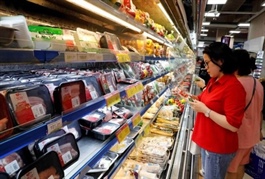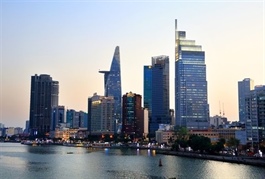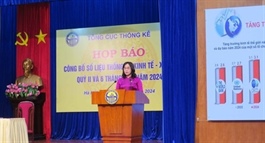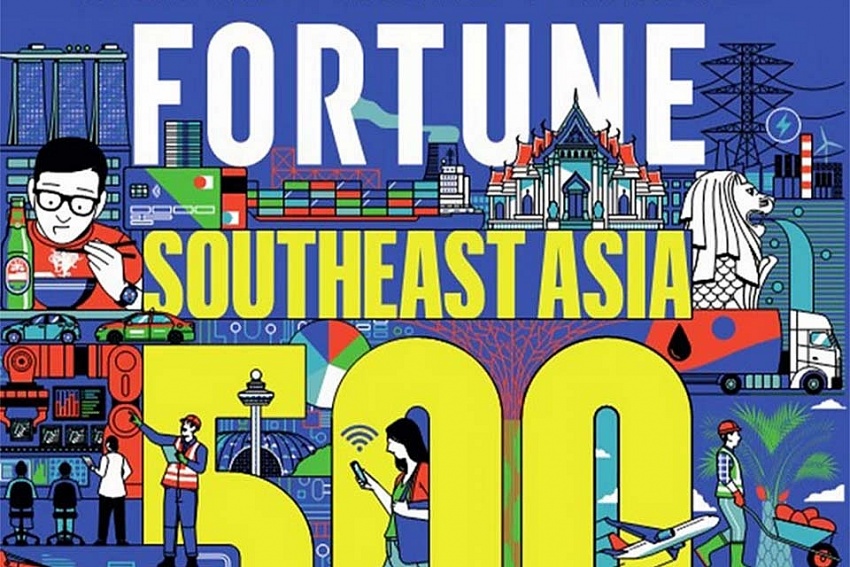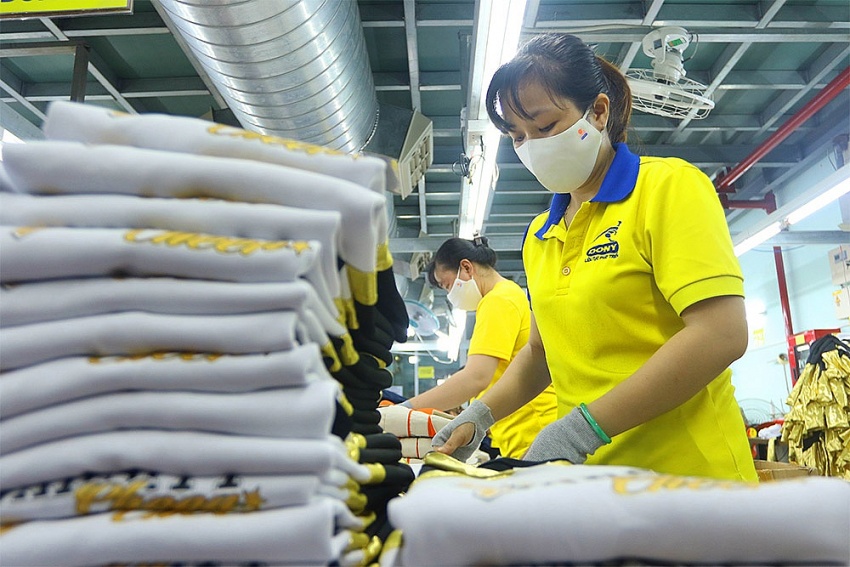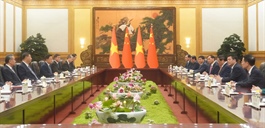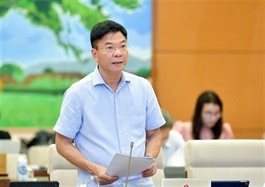Foreign investment disbursement hits new peak in H1
Foreign investment disbursement hits new peak in H1
Foreign investment disbursement in the first half of this year reached an estimated US$10.84 billion, surging 8.2 per cent year-on-year and marking a record high over the past five years, according to the General Statistics Office (GSO).
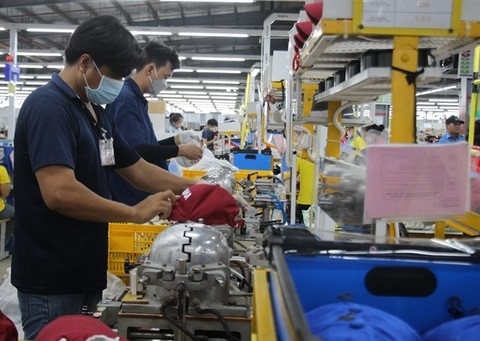
Workers at a foreign-invested firm in Hậu Giang Province. — VNA/VNS Photo Nguyễn Hằng |
The manufacturing and processing sector attracted the largest share of disbursed foreign investment with $8.6 billion, accounting for 79.3 per cent of the total. Real estate followed with $1 billion, equivalent to 9.3 per cent of the total, while production and distribution of electricity, gas, hot water, steam and air conditioning accounted for $418 million, or 3.9 per cent.
The GSO said that foreign investment inflows into Việt Nam during the reviewed period also saw a positive increase of 13.1 per cent year-on-year, to nearly $15.19 billion.
Foreign investors registered nearly $9.54 billion in 1,538 new projects, up 47 per cent in capital and 19 per cent in the project number, compared to the same time last year.
Meanwhile, 592 projects had their capital adjusted up, with a total amount of $3.95 billion, down 6.3 per cent and up 35 per cent year-on-year, respectively.
Capital contributions and share purchases fell 57.7 per cent year-on-year to $1.7 billion.
The department said that foreign investors injected their capital in 18 out of 21 economic sectors in the country in the six months, with the processing and manufacturing industry luring the largest investment of $10.69 billion, or 70.4 per cent of the total, followed by real estate (over $2.47 billion), wholesale and retail sales ($614 million) and science and technology (over $452 million).
Registering nearly $5.58 billion in Việt Nam, Singapore was the largest investor in the country, accounting for around 36.7 per cent of the total in the reviewed period and representing a yearly rise surge of 86 per cent. Japan came next with more than $1.73 billion, or 11.4 per cent of the total. Hong Kong, South Korea and mainland China coming after that.
However, mainland China ranked first in the number of new foreign-invested projects, accounting for 29 per cent of the total projects licensed in Việt Nam in H1, the GSO noted.
It added that foreign investors funneled their capital into 48 cities and provinces across the nation. Of them, Bắc Ninh took the lead with $2.58 billion. In the second and third places were Bà Rịa-Vũng Tàu and Quảng Ninh, with corresponding capitals of $1.54 billion and $1.36 billion.
According to experts, the shift in global production chains, especially in core technology, chip technology and future technology industries, is opening up many opportunities for Việt Nam to attract high-tech foreign investment.
CEO of Vietnam Investment Promotion and Associates Corp Nguyễn Đình Nam agreed. He spoke to the Vietnam News Agency that besides opportunities, there are many challenges facing Việt Nam as it competes with other countries in the region.
Among them are insufficient incentives and support mechanisms for large projects and others in core and source technology, inadequate personnel resources especially in new technology industries, chips, semiconductors and artificial intelligence and energy infrastructure and electricity shortages in some large industrial centres.
The supply chain and capacity of domestic supporting enterprises remain weak compared to other countries in the region, so there is a lack of connection between local enterprises and foreign-invested enterprises, Nam said.

The Liên Hà Thái Industrial Zone in the northern Thái Bình province. — VNA/VNS Photo Thế Duyệt |
To attract high-quality foreign investment, Nam suggested Việt Nam draw up more preferential policies and offer support in corporate income tax for high-tech and source technology projects, especially those in semiconductor chip production.
The country should also speed up administrative reforms to better facilitate foreign investors in addition to focusing on high-quality workforce training and ensuring the synchronous development of infrastructure systems, especially transportation infrastructure connecting airports, seaports, large cities and provinces with industrial centres, he said.
Nam also emphasised the importance of upgrading energy infrastructure and facilitating the implementation of renewable energy projects that meet the standards and production requirements of high-tech projects and protect the environment.
Meanwhile, Deputy General Director of Qualipro Construction JSC Vũ Chí Kiên said that the infrastructure of industrial zones (IZs) plays a very important role in attracting foreign investors.
Kiên told Vietnam News Agency that when foreign investors come to Việt Nam, they are interested in factors such as the location of IZs (convenient for transportation like being near highways, rivers, seaports, and airports), employee recruitment, the hiring costs and social infrastructure for living, accommodation and facilities to develop a supportive business community.
They are also interested in the accompanying technical infrastructure system such as the capacity of the centralised wastewater treatment stations, electricity and water supply and wastewater drainage.
He said an IZ will attract foreign investors if it best meets the above criteria. Thus if Việt Nam wants to lure foreign investors, the infrastructure of IZs is considered the most important and earliest factor that needs to be prepared as it takes between three and five years for developers to research, build and complete an IZ.
Strengthening the connection between domestic enterprises and foreign enterprises is also necessary, Kiên said.



